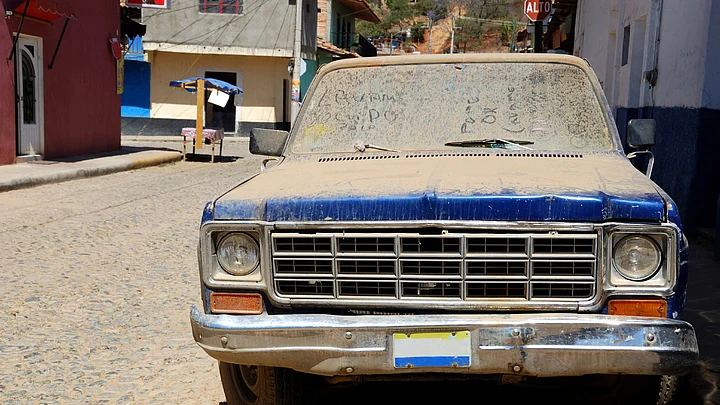In 1992, the United Nations declared it as the most polluted city on the planet. Three years prior to that Mexico came up with a plan to curb air pollution. Hoy No Circula (This One Does Not Circulate Today) came into force in Mexico in November 1989. The rules were quite simple, cars with licence plate numbers ending in 0 and 1 do not ply on Monday, those ending with 2 and 3 don’t hit the roads on Tuesday and so on.
Delhi’s 15-day trial period of the odd-even plan was very similar to Mexico’s Hoy No Circula. The residents of the national capital stood by the experiment and Delhi Chief Minister Arvind Kejriwal promised to bring it back in “improved” form.
In the midst of views and counter views regarding Delhi’s ambient air we approached an expert familiar with the exercise in Mexico. Exequiel Ezcurra, the former head of Mexico City’s National Institute of Ecology, an environmentalist with 30 years of experience recounts the various pitfalls before the Latin American city finally got it right.
Did ‘Hoy No Circula’ Work?
On whether Mexico was able to bring down pollution levels through the rationalisation of vehicles, Ezcurra says the alternatives to beat the ban negated the whole idea of having fewer cars on the roads.
Exequiel Ezcurra, Former Head, Mexico City’s National Institute of EcologyThe ‘Hoy No Circula’ programme drove people to buy second-hand cars with a different licence plate, so the owner could have a car every day of the week. In most cases, it led people to either keep old, highly polluting cars (called “carcachas” in Mexico) or buy a new one. Air quality did not improve, and vehicular congestion worsened.
In fact, two studies on Mexico’s air
pollution control programme illustrate how the well-intentioned programme went
completely out of gear in the years to come.
Lucas W Davis in 2008 found out that the car-rationing led to an increase in the number of registered vehicles across Mexico. People were not willing to compromise with comfort in the long term and landed up buying more inferior-quality second-hand cars.
Other ‘Pollution Control’ Measures
Experts like Ezcurra believe that the plan failed to accomplish its objective of cleaning Mexico’s air. “The number of cars started to increase rapidly, and the number of highly-polluting cars (carcachas) skyrocketed”, says Ezcurra.
But the road rationing policy in Mexico was coupled with other norms such as a fitness test for cars and catalytic converters for cars meant for the Mexican market. “These measures initially did make a difference, because new cars produced much lower emissions”, says Ezcurra.
Who Benefited in Reality?
In fact, the licence plate ban didn’t go down well with Mexico-based experts. Ezcurra believes the automobile industry made the most of the government’s ill-conceived move. “The license plate ban, in my opinion, did not work. The only beneficiary was the automobile industry, which saw a continued rise in sales”, says Ezcurra.
Unilateral approach didn’t yield the desired results and, according to Ezcurra, the focus needed to be on augmenting the public transport system.
Exequiel EzcurraIndeed, the problem in Mexico City is that the government does not dare to make any serious attempts to improve public transportation and to discourage the use of cars. Car manufacturing is a major driver of the economy, and the car industry lobby (AMIA) is incredibly powerful. In 1995, when the low-emission standards were adopted, the large conurbation of Mexico City had 2 million cars. Now it has 7 million. Even if they were all new vehicles with low emissions, the traffic problem is huge and the city lives in a perpetual gridlock. The main problem is that the government in Mexico has not dared to impose low-emission zones or traffic levying charges, while at the same time investing strongly on public transportation options. On the contrary, the government continued to build more and more highways trying to solve the problem, including some bizarre elevated highways called “segundospisos” (second floors) that only called for more car sales.
Mexico’s Air Quality
Despite some initial bloopers, Mexico’s air quality did improve towards the early 2000s. A comprehensive action plan that included supplying clean fuel by state-controlled oil company PEMEX in a phased manner by 1997 started yielding results.
Pollution experts attribute the decline in levels of sulphur dioxide and lead in the atmosphere to Mexico’s comprehensive action plan. The city however continues to battle against smog and unacceptable levels of ozone, which is way beyond safe limits. “All the improvements are attributable to the establishment of harsh vehicular emission standards, not to the “Hoy no circula” programme, which was established in the 1980s with no visible success”, says Ezcurra.
(At The Quint, we question everything. Play an active role in shaping our journalism by becoming a member today.)
